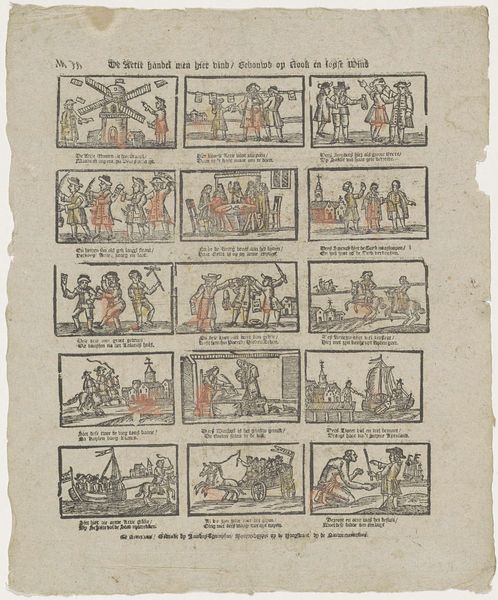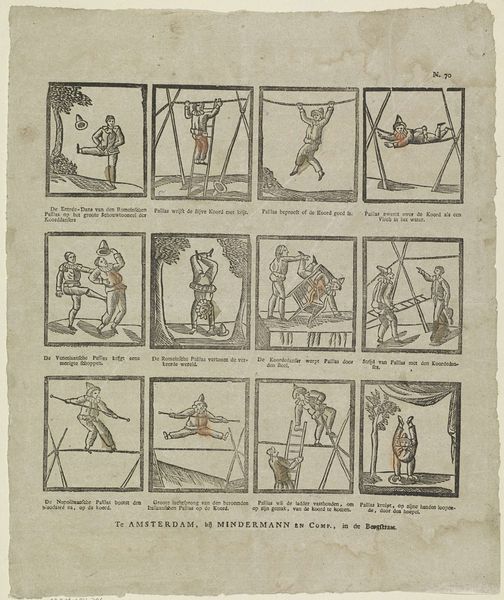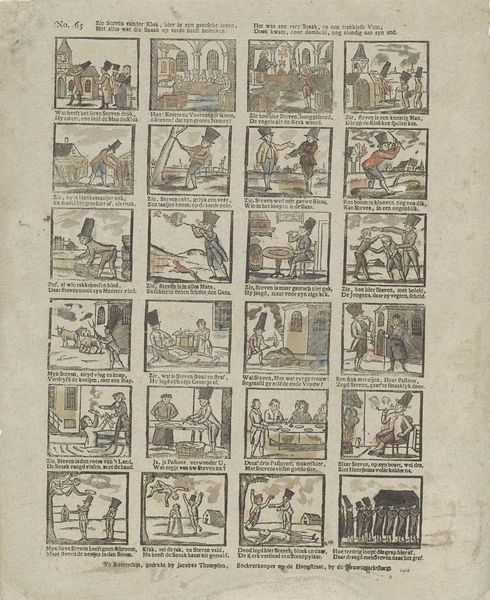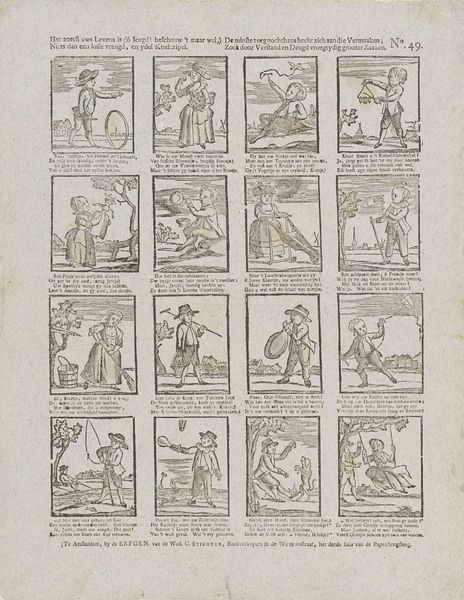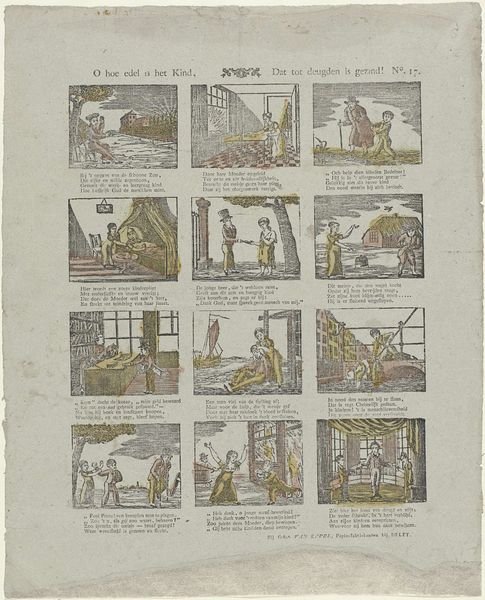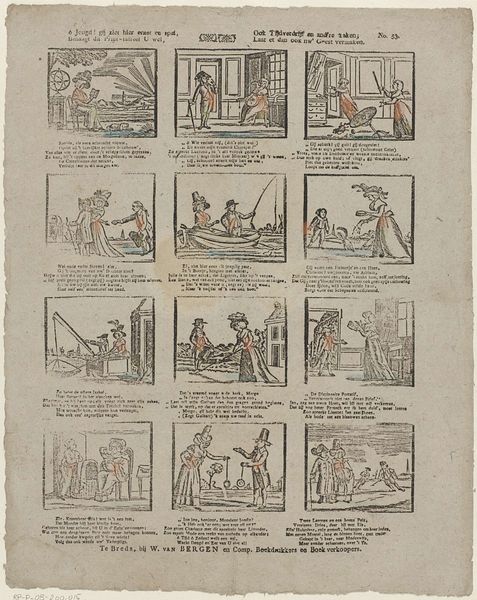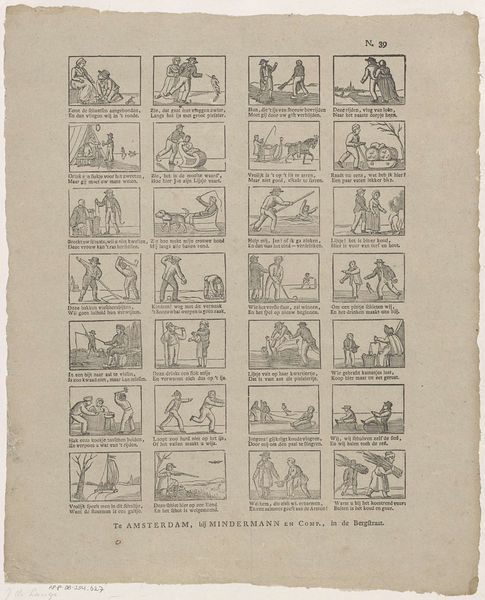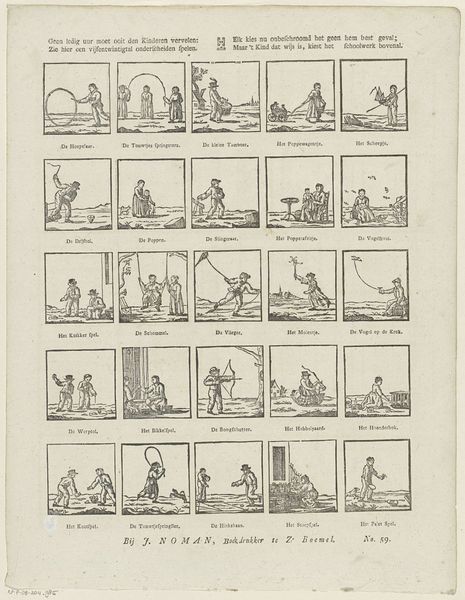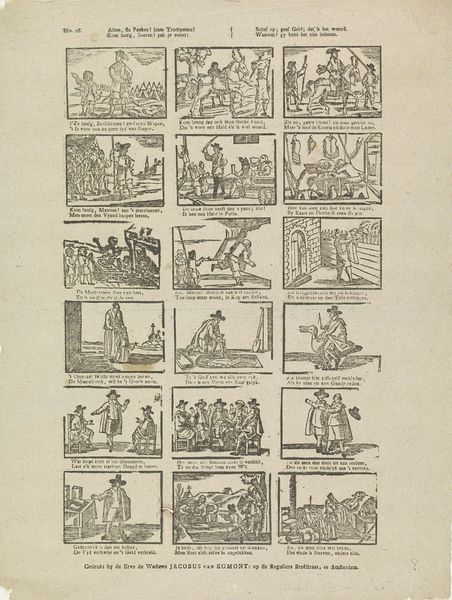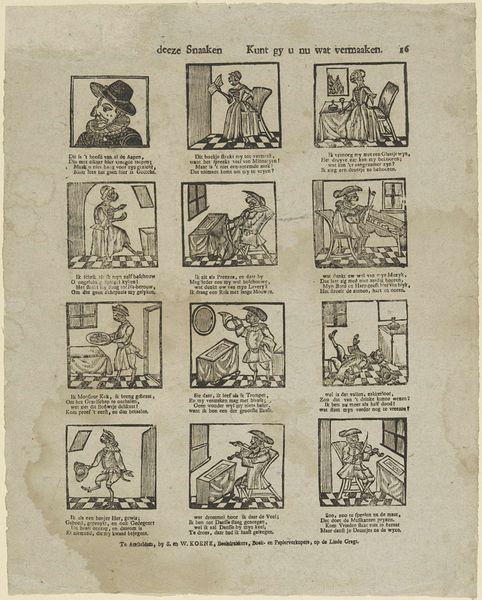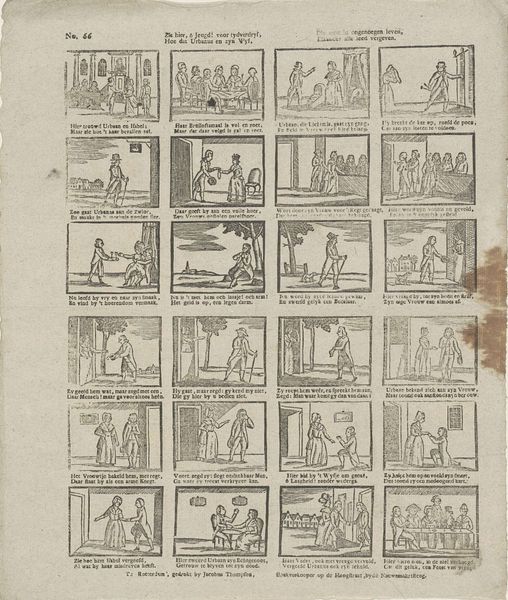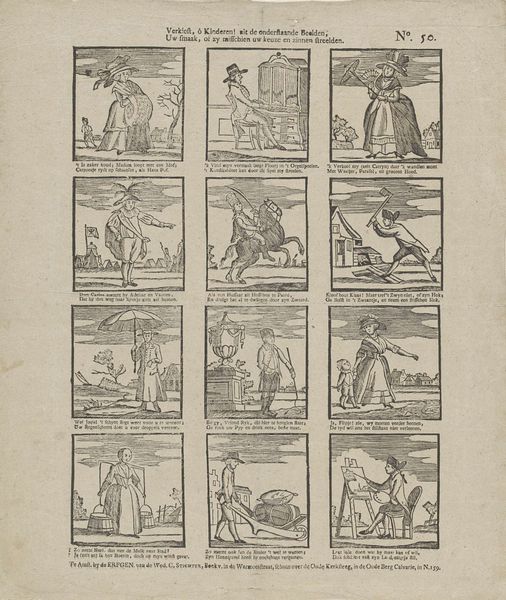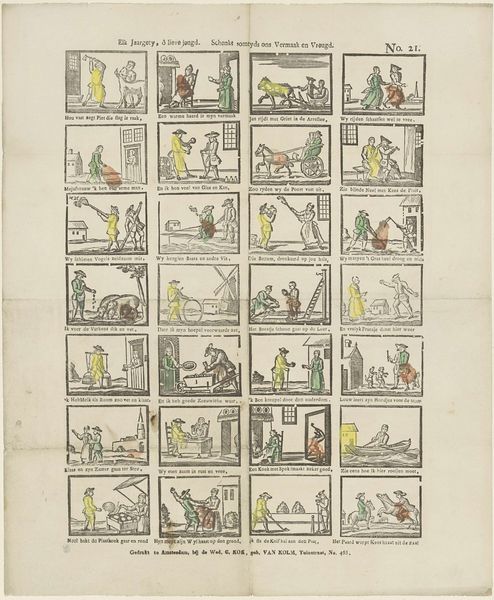
Geen ledig uur moet ooit den kinderen vervelen: / Zie hier een vijfentwintigtal onderscheiden spelen. / Elk kies nu onbeschroomd het geen hem best geval; / Maar 't kin dat wijs is, kiest het schoolwerk bovenal 1806 - 1830
0:00
0:00
print, engraving
#
comic strip sketch
#
narrative-art
#
neoclassicism
# print
#
genre-painting
#
history-painting
#
engraving
Dimensions: height 400 mm, width 329 mm
Copyright: Rijks Museum: Open Domain
Curator: Look at this fascinating print from the Rijksmuseum. Jacob Plügger created this engraving sometime between 1806 and 1830. Its lengthy title translates to: "No idle hour should ever bore the children: / Behold here twenty-five different games. / Let each now freely choose what pleases him best; / But the child that is wise, chooses schoolwork above all." Editor: Twenty-five different games! At first glance, it reminds me of a storyboard, or maybe even an early comic strip, with all those little vignettes lined up so neatly. The style appears rather austere, very disciplined. I get the sense of order, almost to a point of humorlessness, ironically. Curator: Indeed! The visual language reflects the Neoclassical movement—very ordered, very rational. The intention here wasn’t just to illustrate children’s games but to embed a moral lesson. Think about the context of early 19th-century pedagogy. Childhood was increasingly viewed as a formative period, where education and discipline were paramount for creating good citizens. Editor: Right. And that final line from the title jumps out: “…the child that is wise, chooses schoolwork above all.” The piece reflects the societal pressure to forgo childish play and focus on academic advancement, so visible even in games like "blind man's buff" or "marbles." What are the politics of this imagery suggesting about childhood innocence and adult expectations? Curator: Exactly! Each game depicted—from "hoop-rolling" to "kite flying"—is carefully chosen to subtly underscore this message. This work underscores how deeply societal expectations were being imprinted even onto children's playtime. It suggests an active role of such common objects as instruments of cultural messaging, a point further made through the form of an engraving being endlessly reproducible. Editor: Looking at this image, I cannot stop considering it as a commentary of a long legacy that frames child’s play as being “unproductive” or “not serious," constantly undermined by a more serious pursuit, even though childhood development suggests otherwise! Curator: It’s a perfect distillation of the era's attitudes—educational prints like these were more than just decorative; they were tools for shaping young minds. Editor: Absolutely. Considering its socio-historical context gives this piece a new dimension; beyond the charm of depicting games, it mirrors the pressures of the period.
Comments
No comments
Be the first to comment and join the conversation on the ultimate creative platform.
